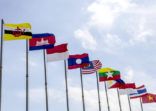Most markets across Southeast Asia have been muted as a result of a confluence of factors, including delayed economic re-opening, poor handling of Covid-19 and low vaccination rates.
Investors may have anticipated these markets to rally given expectations that commodity exporters would benefit from high commodity prices.
“An accelerated vaccination roll-out is needed to lift domestic consumption in Asean, which can in turn increase economic activity and earnings,” said John Tsai, head of core equities for Eastspring, based in Singapore.
The vaccination roll-out is notably important for Asean as domestic demand accounts for a significant share of GDP – it makes up 68% and 73% of GDP for Vietnam and Philippines, respectively. “Economic activity in these countries can only pick up when vaccination rates rise and domestic consumption returns on the back of higher consumer confidence,” added Tsai.
Bright spots emerging
Yet while regional valuations may look expensive from a price-to-earnings perspective, since earnings are depressed, Eastspring believes that valuations look compelling should earnings normalise.
Looking at specific markets, from a price-to-book perspective, the Philippines is trading at more than one standard deviation below its 10-year average.
At the same time, the Indonesian and Malaysian markets are also trading below their 10-year price-to-book averages, while the Singapore and Thai markets are trading in line with their historical averages.
“If the political backdrop is stable, a potential rebound in consumer spending and attractive valuations will underpin the long-term attractiveness of the Asean markets,” explained Tsai.
In particular, sectors such as consumer staples and financials offer opportunities for investors, especially from firms that are able to adapt to digitalisation.
In the eyes of investors like Eastspring, this makes agility a key attribute for companies, given the need to adapt to fast-moving trends.
Targeting Indonesia’s potential
Specifically in Indonesia, infrastructure should benefit from recent initiatives that have sharpened the focus on this segment of the market.
For example, the establishment of the Indonesia Investment Authority (INA), the country’s sovereign wealth fund, has kick-started a mission to co-fund the country’s essential infrastructure by recycling existing government assets.
“This is an exciting [development],” said Ari Pitoyo, head of investments at Eastspring in Indonesia. “Being an all-year sunshine country, Indonesia’s dependence on coal and its realignment is one of the opportunities. Indonesia’s outdated public water system is another option.”
He is also optimistic about certain parts of the country’s financial sector, connected to the digitalisation trend.
This is based on there being around 202 million internet users, or three-quarters of the population – the majority of which go online via mobile devices.
“Different from China in the early days of digitalisation, Indonesia’s consumers have experience in traditional banking, as do e-commerce merchants,” said Pitoyo. “Therefore, those players who can adapt with digital applications will be in pole position.”

















